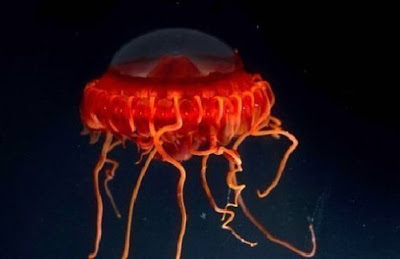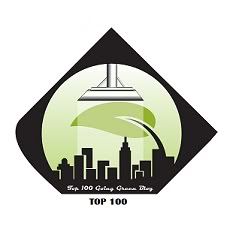1 x 8 + 1 = 9
12 x 8 + 2 = 98
123 x 8 + 3 = 987
1234 x 8 + 4 = 9876
12345 x 8 + 5 = 98765
123456 x 8 + 6 = 987654
1234567 x 8 + 7 = 9876543
12345678 x 8 + 8 = 98765432
123456789 x 8 + 9 = 987654321
1 x 9 + 2 = 11
12 x 9 + 3 = 111
123 x 9 + 4 = 1111
1234 x 9 + 5 = 11111
12345 x 9 + 6 = 111111
123456 x 9 + 7 = 1111111
1234567 x 9 + 8 = 11111111
12345678 x 9 + 9 = 111111111
123456789 x 9 +10= 1111111111
9 x 9 + 7 = 88
98 x 9 + 6 = 888
987 x 9 + 5 = 8888
9876 x 9 + 4 = 88888
98765 x 9 + 3 = 888888
987654 x 9 + 2 = 8888888
9876543 x 9 + 1 = 88888888
98765432 x 9 + 0 = 888888888
Brilliant, isn't it?
And look at this symmetry:
1 x 1 = 1
11 x 11 = 121
111 x 111 = 12321
1111 x 1111 = 1234321
11111 x 11111 = 123454321
111111 x 111111 = 12345654321
1111111 x 1111111 = 1234567654321
11111111 x 11111111 = 123456787654321
111111111 x 111111111 = 12345678987654321
Friday, October 31, 2008
Beauty of Mathematics !!!!!!!
Posted by Meenu Khare at 12:13 AM 3 comments
Labels: Beauty, brilliant.symmetry, iIntelligence, interesting, Mathematics, meenu khare
Saturday, October 25, 2008
Fields Medal: The "Nobel Prize of Mathematics"



 The Fields Medal is a prize awarded to mathematicians not over 40 years of age at each International Congress of the International Mathematical Union, a meeting that takes place every four years. The Fields Medal is widely viewed as the top honor a mathematician can receive. It comes with a monetary award, which in 2006 was C$15,000 (US$15,000 or €10,000). Founded at the behest of Canadian mathematician John Charles Fields, the medal was first awarded in 1936, to Finnish mathematician Lars Ahlfors and American mathematician Jesse Douglas and has been regularly awarded since 1950. Its purpose is to give recognition and support to younger mathematical researchers who have made major contributions.
The Fields Medal is a prize awarded to mathematicians not over 40 years of age at each International Congress of the International Mathematical Union, a meeting that takes place every four years. The Fields Medal is widely viewed as the top honor a mathematician can receive. It comes with a monetary award, which in 2006 was C$15,000 (US$15,000 or €10,000). Founded at the behest of Canadian mathematician John Charles Fields, the medal was first awarded in 1936, to Finnish mathematician Lars Ahlfors and American mathematician Jesse Douglas and has been regularly awarded since 1950. Its purpose is to give recognition and support to younger mathematical researchers who have made major contributions.
The Fields Medal is often described as the "Nobel Prize of Mathematics" for the prestige it carries, though in most other ways the relatively new Abel Prize is a more direct analogue. The comparison is not entirely accurate because the Fields Medal is only awarded every four years. The Medal also has an age limit: a recipient's 40th birthday must not occur before January 1 of the year in which the Fields Medal is awarded. This rule is based on Fields' desire that… while it was in recognition of work already done, it was at the same time intended to be an encouragement for further achievement on the part of the recipients and a stimulus to renewed effort on the part of others.The monetary award is much lower than the roughly US$1.5 million given with each Nobel prize. Finally, Fields Medals have generally been awarded for a body of work, rather than for a particular result; and instead of a direct citation there is a speech of congratulation.Other major awards in mathematics, such as the Wolf Prize in Mathematics and the Abel Prize, recognise lifetime achievement, again making them different in kind from the Nobels, although the Abel has a large monetary prize like a Nobel. The Fields Medal has the prestige of the selection by the IMU, which represents the world mathematical communityThe Fields Medals are commonly regarded as mathematics' closest analog to the Nobel Prize (which does not exist in mathematics), and are awarded every four years by the International Mathematical Union to one or more outstanding researchers. "Fields Medals" are more properly known by their official name, "International medals for outstanding discoveries in mathematics."The Fields Medal is made of gold, and shows the head of Archimedes (287-212 BC) together with a quotation attributed to him: "Transire suum pectus mundoque potiri" ("Rise above oneself and grasp the world"). The reverse side bears the inscription: "Congregati ex toto orbe mathematici ob scripta insignia tribuere" ("the mathematicians assembled here from all over the world pay tribute for outstanding work").Nobel prizes were created in the will of the Swedish chemist and inventor of dynamite Alfred Nobel, but Nobel, who was an inventor and industrialist, did not create a prize in mathematics because he was not particularly interested in mathematics or theoretical science.
Declined award
Grigory Perelman, a reclusive Russian mathematician, has solved a key piece in a century-old puzzle known as the Poincaré conjecture. Dr. Perelman was one of four mathematicians awarded the Fields Medal for achievement in mathematics but as with his previous honors, Dr. Perelman refused to accept this one, and he did not attend the ceremonies at the International Congress of Mathematicians in Madrid, even though Sir John M. Ball, president of the Union, had personally flown to St Petersburg and asked Dr. Perelman to attend the ceremony.
Posted by Meenu Khare at 9:32 PM 1 comments
Labels: Abel Prize, declined award, Fields Medal, Grigory Perelman, interestin.entertaining, International Mathematical UnionJohn Charles Fields, Nobel Prize
Saturday, October 18, 2008
Inspiring Science : Momentum(p=mv)
Posted by Meenu Khare at 11:46 AM 0 comments
Labels: entertaining, Inspiring Science, meenu khare, Momentum, right direction
Tuesday, October 14, 2008
New Species Found in Asian Sea?





A square jaw and edgy brow give a distinctive profile to this boxfish, one of many exotic marine creatures recently found by scientists exploring Southeast Asia's Celebes Sea.
The international team of researchers recently returned from two weeks in the Celebes, a little-explored sea between Malaysia and the Philippines that is home to one of the world's deepest ocean basins.
The Celebes's relative isolation and chilly depths make it one of the world's most richly diverse marine habitats, likely hosting species that have lived in seclusion for millions of years, expedition leader Larry Madin told the Associated Press.
"This is probably the center where many of the species evolved and spread to other parts of the ocean, so it's going back to the source in many ways," said Madin, who is director of research at the Massachusetts-based Woods Hole Oceanographic Institution (WHOI).
The team found several species that are likely new to science, Madin added, including a swimming sea cucumber, a black jellyfish, and a spiny orange worm with tentacles growing out its head.
Experts will be studying the hundred specimens brought back from the expedition to determine which species are new discoveries.
The research was partly funded by WHOI, the National Geographic Society's Expeditions Council, the nonprofit Conservation International, the National Oceanic and Atmospheric Administration, and the Philippine government.
Courtesy: National Geographic News
Posted by Meenu Khare at 8:34 PM 2 comments
Labels: Asian Sea, entertaining, interesting, marine creatures, National Geographic News, New Species, WHOI
Saturday, October 4, 2008
Oceanarium : The World of Adventure, Fun and Excitement





Did you think the ocean is just about fish and boats?
Come to oceanarium, learn what floats, what lives, and how we need
and use the ocean every day.
The term oceanarium can either mean a marine mammal park or a large-scale aquarium presenting an ocean habitat with marine animals, especially large ocean dwellers (e.g. sharks).
Marineland of Florida, one of the first theme parks in Florida, USA, started in 1938, claims to be "the world's first oceanarium", while Ocean Park in Hong Kong claims to be "the world's largest oceanarium".
The Oceanarium BOURNEMOUTH helps you to explore the secrets of the ocean in an adventure and will take you to some of the world’s most amazing waters.
This is not all what oceanariums provide you, threre are amazing hotels and restaurants too where you can Discover life beneath the waves and come face to face with some of the world’s most amazing marine life. .
The Oceanarium restaurants
One of the best Oceanarium restaurants is located in the Pacific Beach Hotel in Waikiki. The main attraction of this hotel is the 3-floor world-class indoor fish tank. It is 16 meters tall, 10 meters wide, and if you eat next to it, it feels as if you’re eating in the middle of an aquarium
From your table, you have views into the 3-storey 280,000 gallon aquarium, which holds nearly 400 fish, including a spotted eagle ray and a pelagic sting ray. The hotel's divers feed the fish several times a day--which makes for a spectacular show for hotel guests and customers in the restaurant.
Oceanarium India
India's first 'oceanarium', showcasing its marine biodiversity, will be set up at Kerala. The 'oceanarium', spread over a 60-acre area at Puthuvypeen, a marine biology research station would also form part of the 'oceanarium',
These parks would give technical and other assistance to set up ''backyard hatcheries'' in rural households. Women would be especially trained for this.
The Government of Kerala is proposed to develop an Oceanarium in a joint partnership between Public and Private (PPP). The project at New Vypeen, the coastline of the Arabian Sea is complemented by many features. Attractions will include a Marine Park, International Marine Biological Research Centre, Centre for Marine Resources, Ecology Centre, Convention Centre, Amphitheatre and a glass tunnel to showcase an ocean habitat with marine animals. The ambitious Oceanarium project to be launched by 2010.
Posted by Meenu Khare at 8:44 PM 3 comments
Labels: Adventure, Beach Hotel, biodiversity, entertaining, Excitement, Fun, interesting, marine, Oceanarium India, park, restaurant




